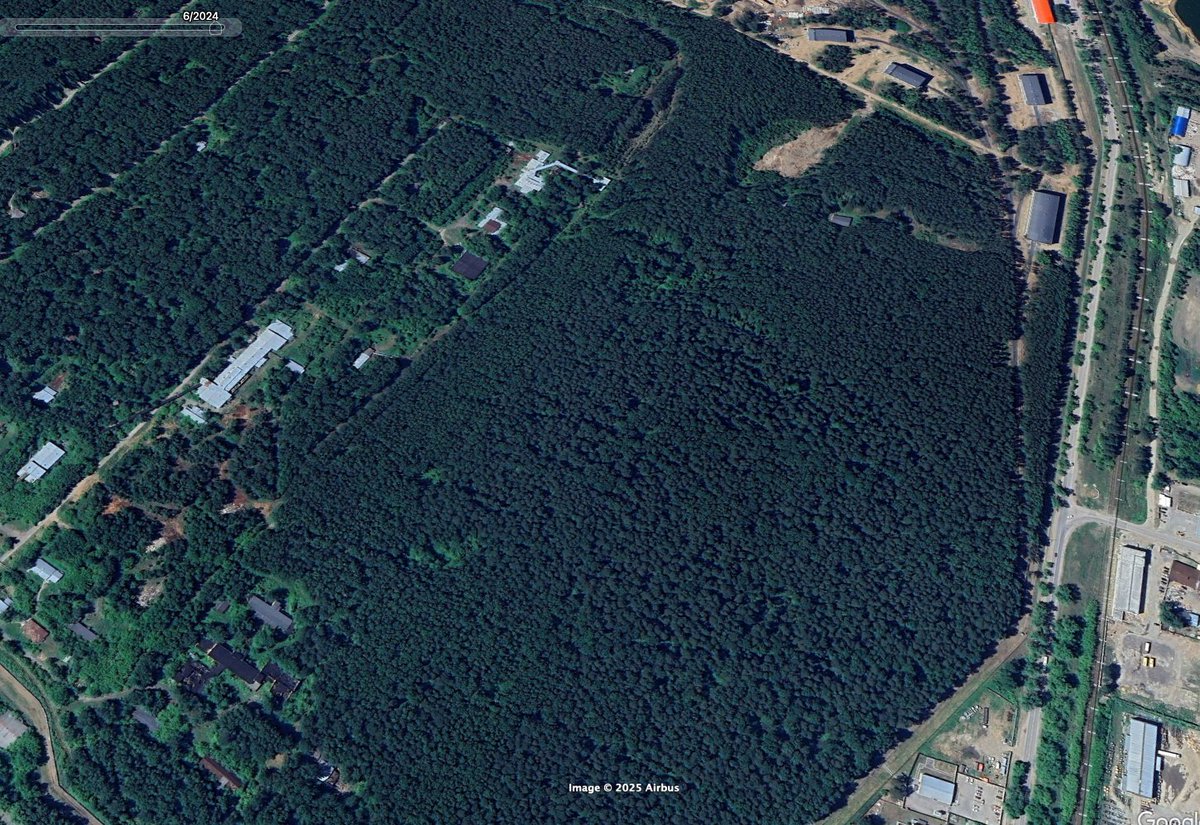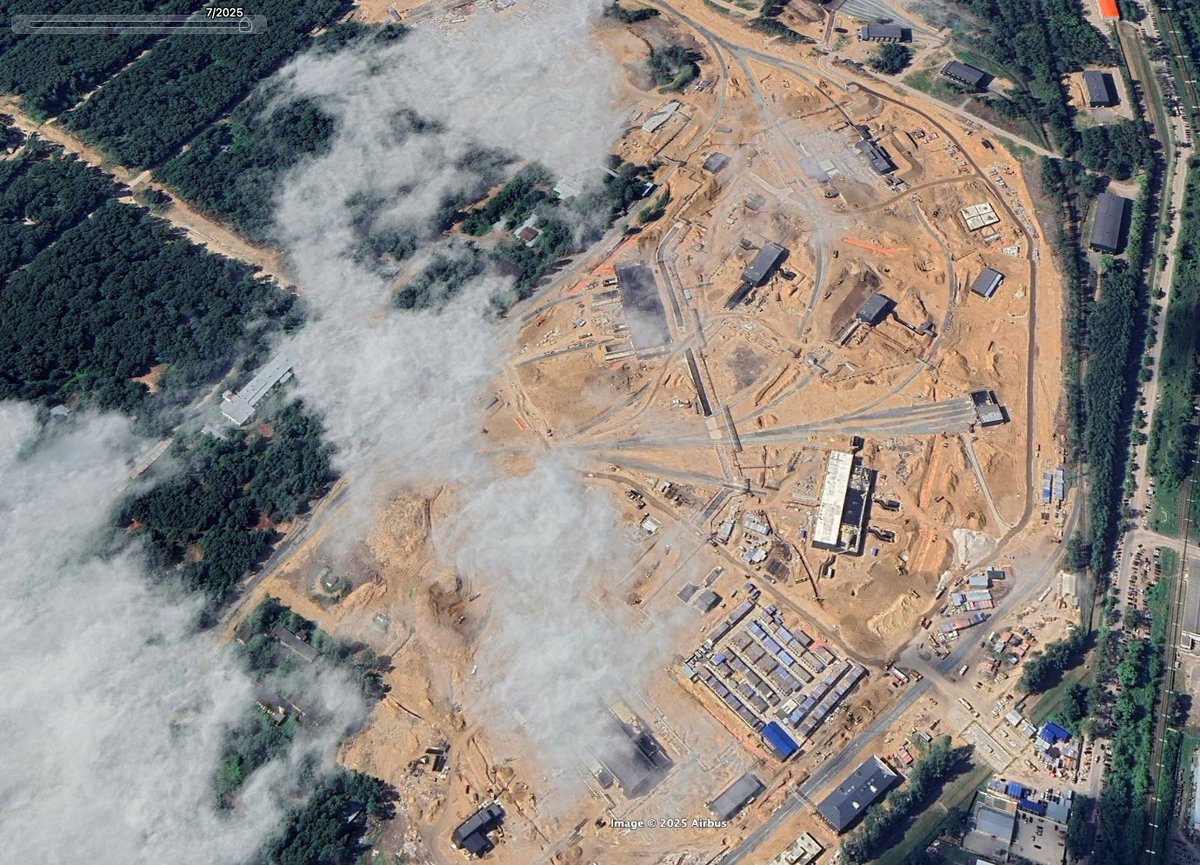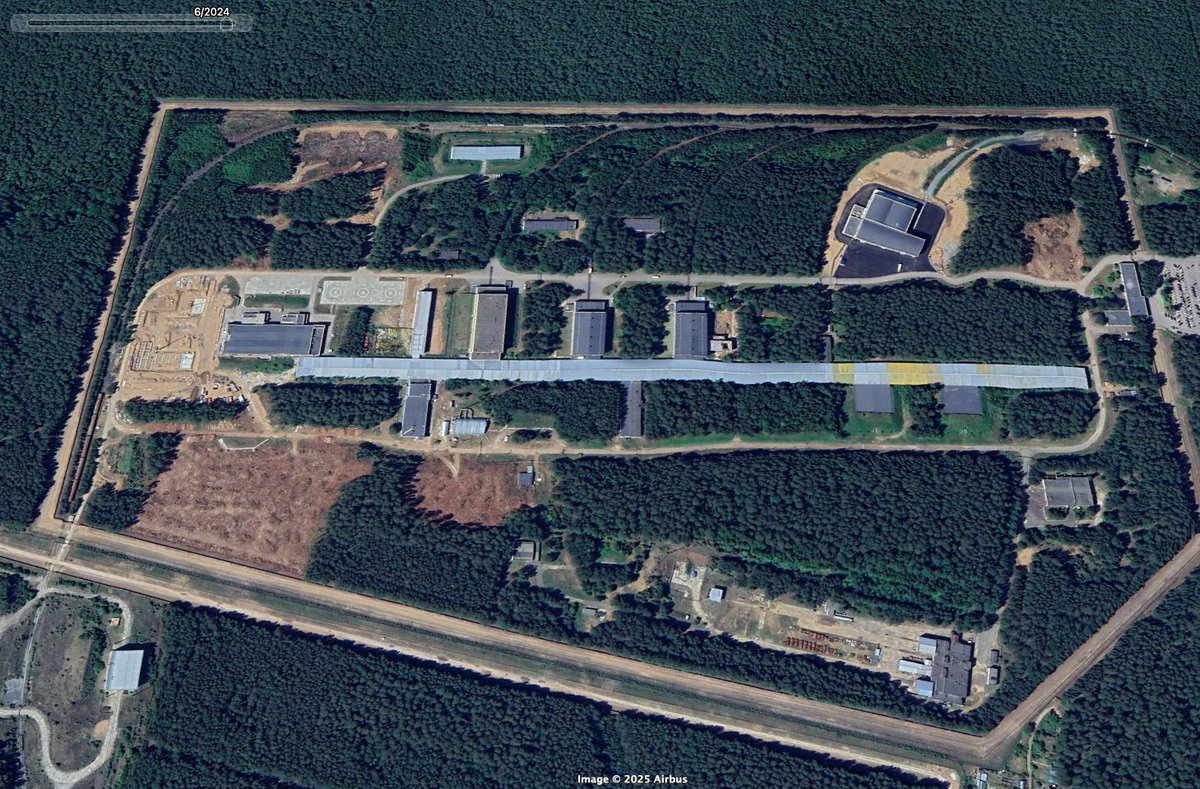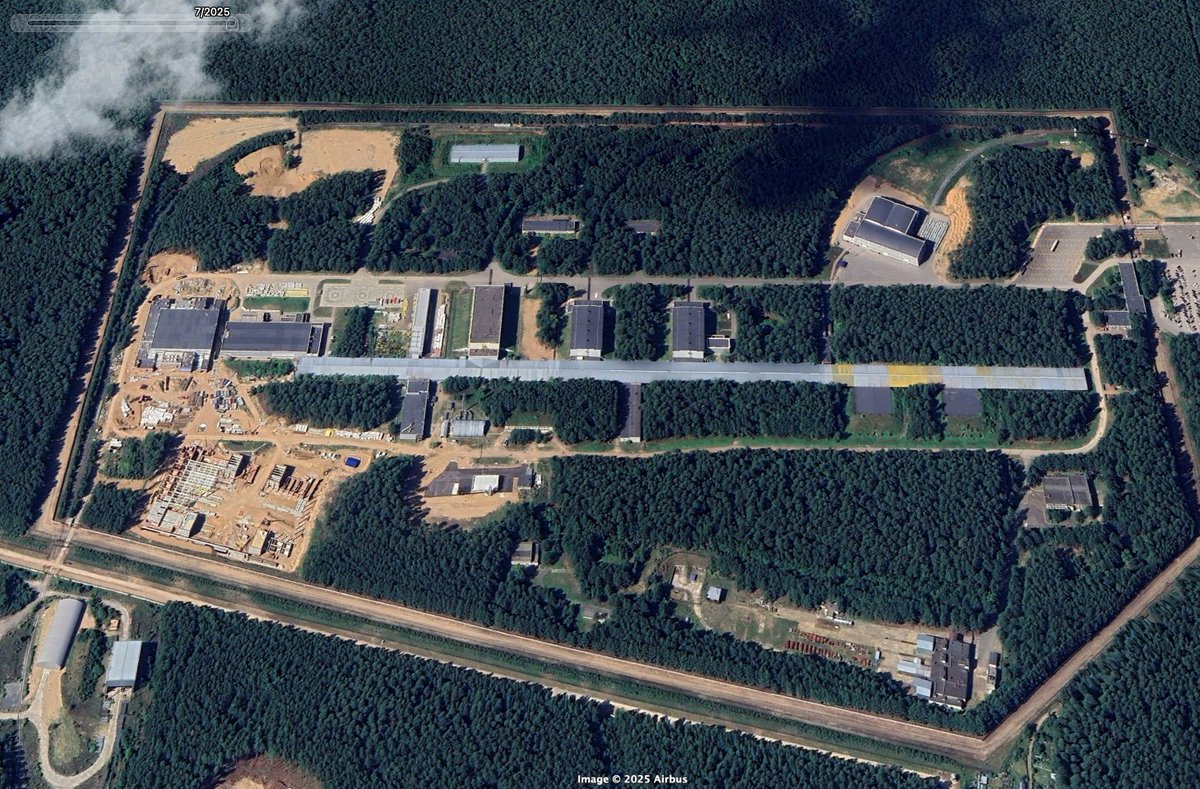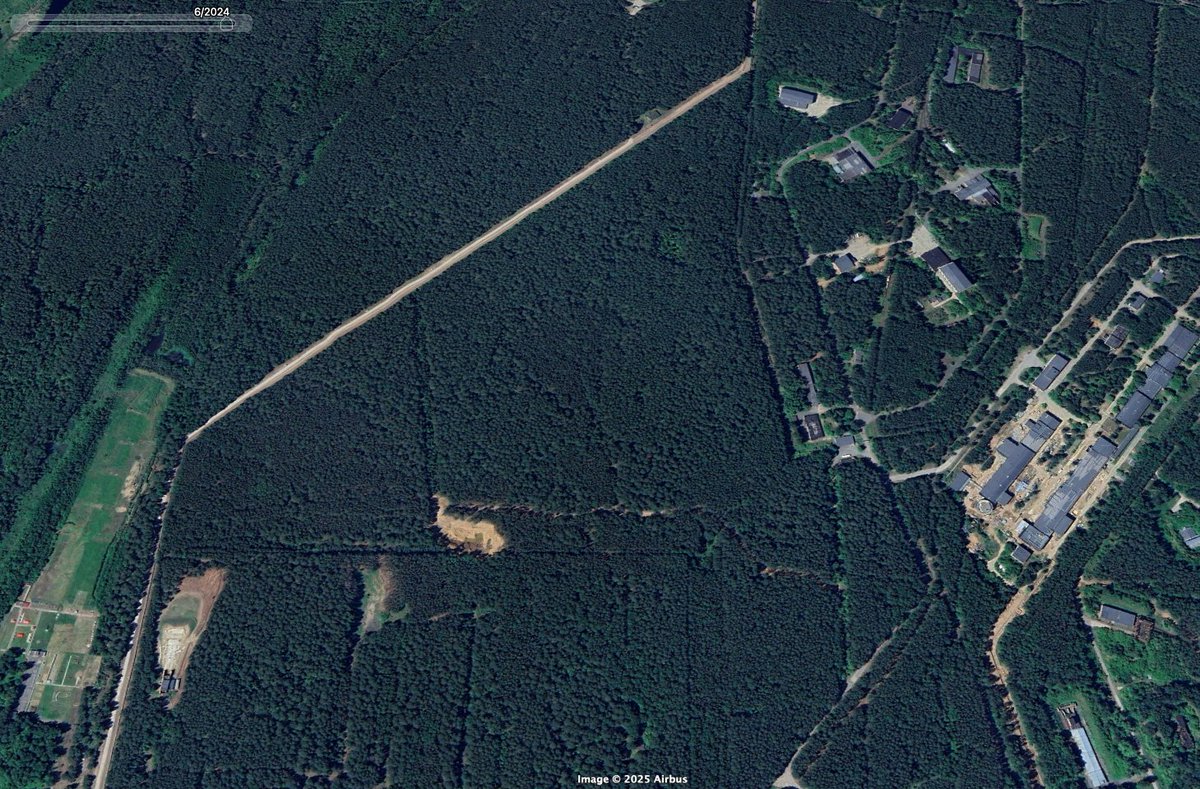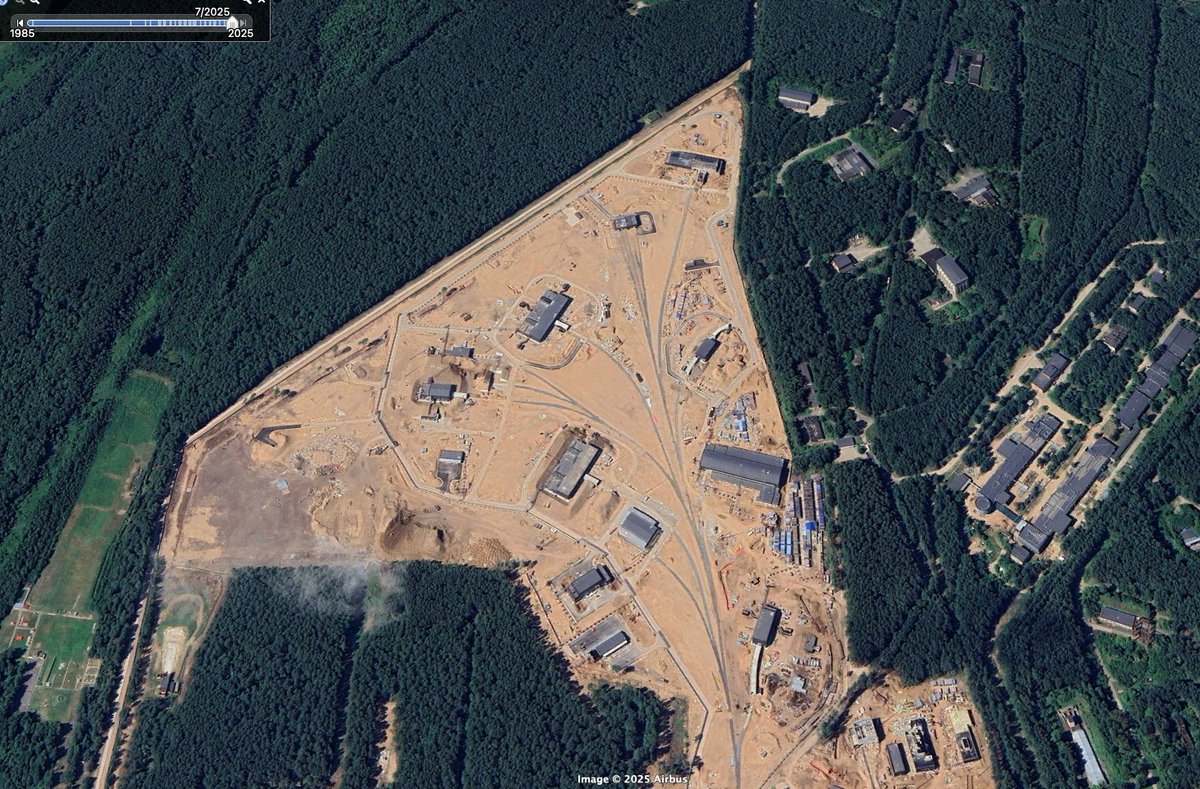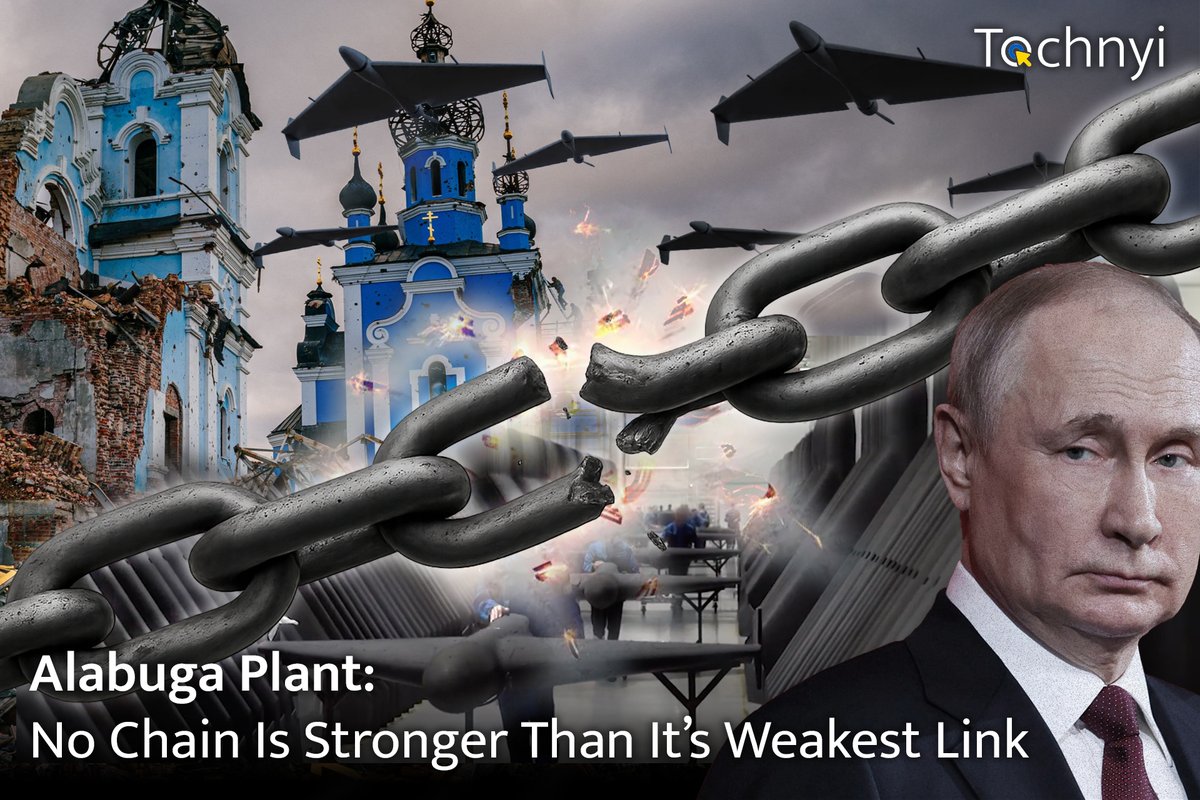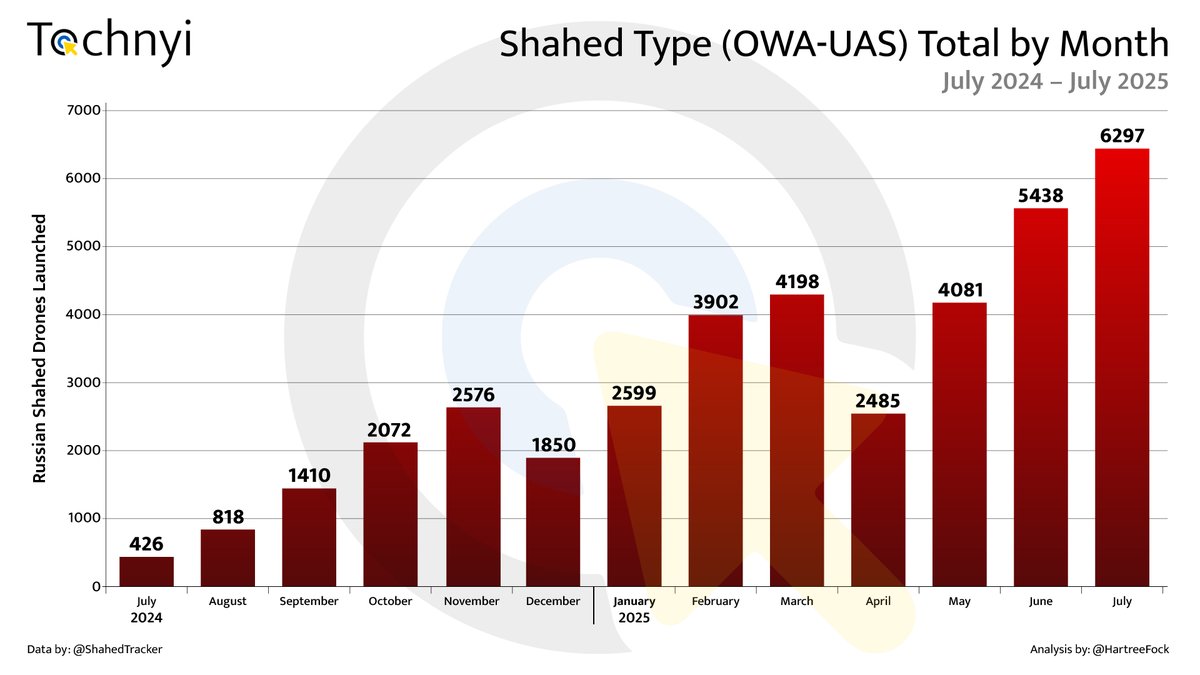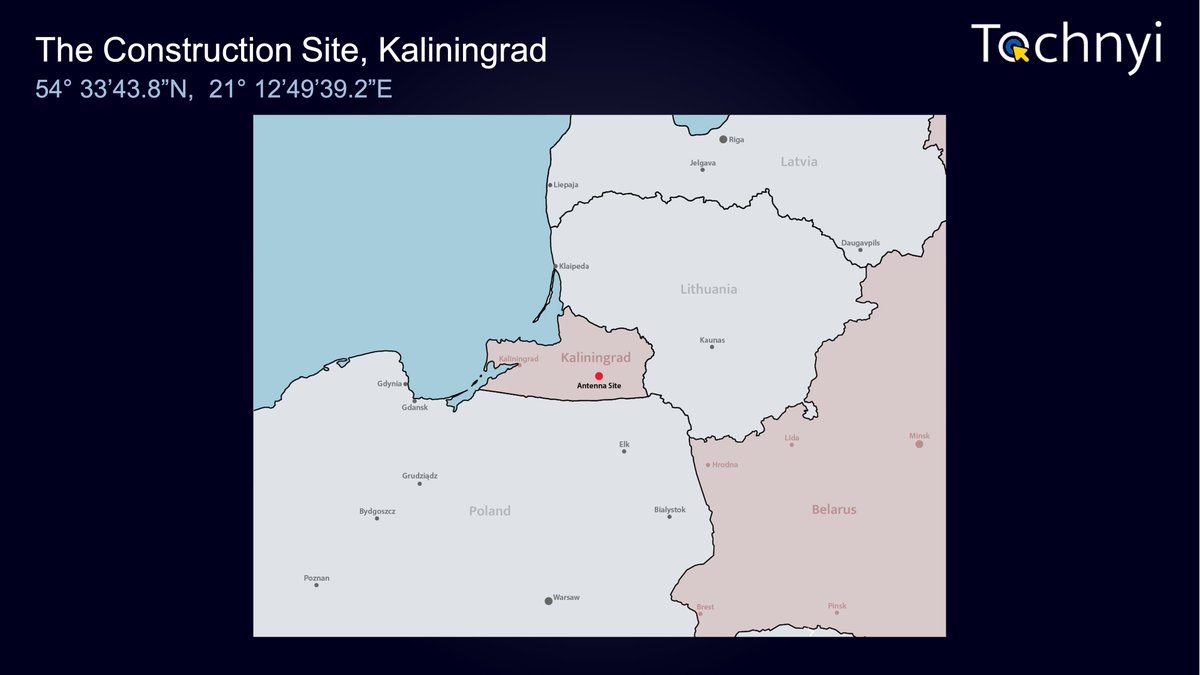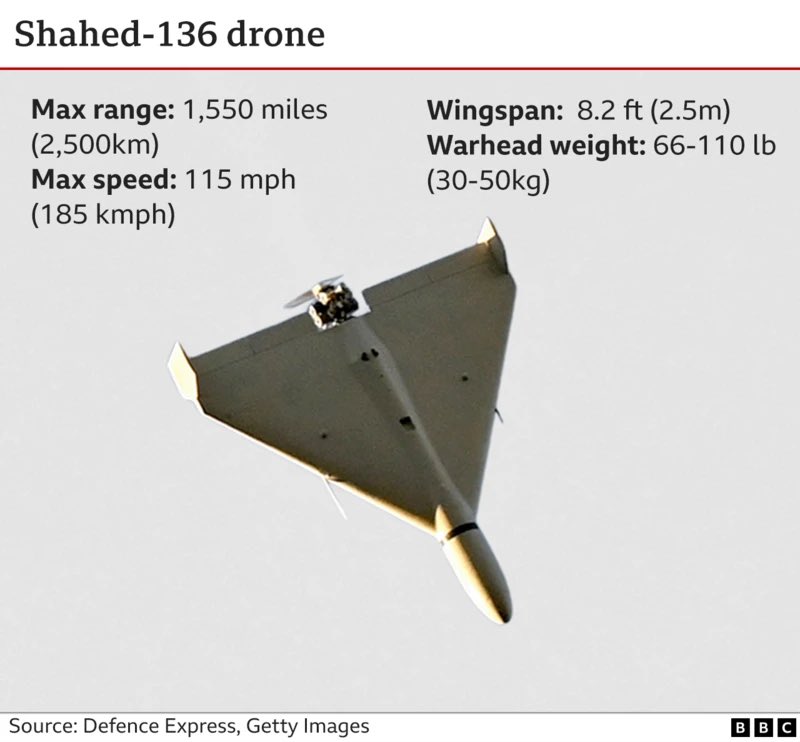Recent criticism of Western-supplied equipment to Ukraine and the industries that produce it has characterised this equipment as “boutique”; i.e. a luxurious, over-engineered item with a lengthy manufacturing time. This narrative is also commonly found to promote the notion that inflated budgets and poor performances are inherent within manufacturing industries. Moreover, some critics have blamed Ukraine’s allies’ inadequacies in producing more ammunition and vehicles on these same manufacturing complexities. Along with addressing this criticism, we will examine why many pieces of artillery have been removed from the battlefield for repair.
Barrels are an essential component in weapon systems, guiding the ammunition through a long narrow cylindrical tube. Barrels are divided into three sections from the breech face: the combustion chamber, bore, and the muzzle. The graphic below illustrates a typical gun barrel design, depicting components such as the breech, bore, and muzzle [1]. The figure also shows a cross-sectional view of a gun barrel that depicts the grooves on the inner surface of the bore.
The projectile's outer diameter is slightly smaller to the barrel's inner diameter. When the trigger is pulled, the propellant burns and produces a large volume of gas. High-pressure gas combines with mechanical force to increase the ammunition's kinetic energy, pushing it towards the bore and muzzle of the barrel. The conversion of chemical to mechanical energy creates high-pressure and high-temperature conditions inside the chamber, leading to erosion and wear of the material after every firing cycle. This results in plastic deformation followed by permanent barrel failure. 1/10
Barrels are an essential component in weapon systems, guiding the ammunition through a long narrow cylindrical tube. Barrels are divided into three sections from the breech face: the combustion chamber, bore, and the muzzle. The graphic below illustrates a typical gun barrel design, depicting components such as the breech, bore, and muzzle [1]. The figure also shows a cross-sectional view of a gun barrel that depicts the grooves on the inner surface of the bore.
The projectile's outer diameter is slightly smaller to the barrel's inner diameter. When the trigger is pulled, the propellant burns and produces a large volume of gas. High-pressure gas combines with mechanical force to increase the ammunition's kinetic energy, pushing it towards the bore and muzzle of the barrel. The conversion of chemical to mechanical energy creates high-pressure and high-temperature conditions inside the chamber, leading to erosion and wear of the material after every firing cycle. This results in plastic deformation followed by permanent barrel failure. 1/10

2/10 In the past, barrels were retired because the walls of the barrels themselves became thinned due to wear. This was caused by the continuous process of erosion which occurred during firing; an erosion process of both the chemical and the mechanical type [1-2-3].
Technological advancements in materials and coatings have, however, helped to inhibit or alleviate barrel erosion. Despite this, overall, four main routes of failure exist for any gun barrel: wear and erosion, fatigue, plastic bore deformation and gas leakage/burst (as illustrated in the image below for reference).
The last two on this list are classed as catastrophic failures. The first sees the barrel deform plastically to the point where its geometry is compromised and rendered unsafe to operate. This can be triggered by improper use, or combustion of the propellant charges causing an anomalous increase in chamber pressure. The second is the creation of a fracture across the barrel’s thickness which causes gases to be expelled during operation. This could lead to a more substantial failure if the material used for construction is too brittle.

Technological advancements in materials and coatings have, however, helped to inhibit or alleviate barrel erosion. Despite this, overall, four main routes of failure exist for any gun barrel: wear and erosion, fatigue, plastic bore deformation and gas leakage/burst (as illustrated in the image below for reference).
The last two on this list are classed as catastrophic failures. The first sees the barrel deform plastically to the point where its geometry is compromised and rendered unsafe to operate. This can be triggered by improper use, or combustion of the propellant charges causing an anomalous increase in chamber pressure. The second is the creation of a fracture across the barrel’s thickness which causes gases to be expelled during operation. This could lead to a more substantial failure if the material used for construction is too brittle.


3/10 As you can imagine, gun barrels operated using correct procedure and are subject to frequent inspection are unlikely to malfunction. However, wear and erosion are inevitable.
Two factors contribute to the erosion and wear process: temperature and the velocity of the shell.
Propellant gases force the projectile forward down the barrel, past the ‘shot-start force’ of the driving band. The projectile exits the muzzle at high velocity, while the gases expand and follow behind it. The firing cycle is then able to be repeated. The lifespan of a gun barrel can generally range from anything from 100 to 1000 rounds [3]. When a gun barrel fires a projectile, it follows a thermodynamic cycle similar to that of a single-stroke engine. The pressure gradients during the projectile's movement within the bore can be observed from the image below, which depicts the nature of such gradients at different locations.
Two factors contribute to the erosion and wear process: temperature and the velocity of the shell.
Propellant gases force the projectile forward down the barrel, past the ‘shot-start force’ of the driving band. The projectile exits the muzzle at high velocity, while the gases expand and follow behind it. The firing cycle is then able to be repeated. The lifespan of a gun barrel can generally range from anything from 100 to 1000 rounds [3]. When a gun barrel fires a projectile, it follows a thermodynamic cycle similar to that of a single-stroke engine. The pressure gradients during the projectile's movement within the bore can be observed from the image below, which depicts the nature of such gradients at different locations.

4/10 The nature of wear and erosion is often localised on the barrel’s rifling, where materials experience micro-structural change due to the cyclical high-temperatures to which they are subjected. The dependency on temperature and speed is demonstrated in the graph below, where we can see how barrel wear occurs at its highest in the combustion chamber and the muzzle section [3].
This explains why Russian artillery pieces having undergone catastrophic failure are frequently photographed with this having occurred close to the base of their barrels. This event is obviously not limited solely to Russian barrels. Pictured below is a Russian D20 [3b] which experienced a failure in its high-pressure section due to an abrupt increase of pressure from a faulty propellant charge.

This explains why Russian artillery pieces having undergone catastrophic failure are frequently photographed with this having occurred close to the base of their barrels. This event is obviously not limited solely to Russian barrels. Pictured below is a Russian D20 [3b] which experienced a failure in its high-pressure section due to an abrupt increase of pressure from a faulty propellant charge.


5/10 Gun barrels, as mentioned before, undergo significant thermal, chemical, and/or mechanical degradation of the bore material during their exposure to hot combustion gases. If the steel bore is not protected it is fully exposed to these hot gases, which can result in thermally altered layers [3]. These are also known as ‘heat affected zones’ and occur both at and below the bore surface.
This, in turn, can lead to ‘heat checking’, characterised by an alligator skin appearance, as well as cracking of the bore surface itself. Both of these problems increase exponentially with continued firing. Additionally, hot gas-induced degradation of the fully exposed steel bore can cause thermo-chemical firing damage, leading to gas-wash erosion.
This, in turn, can lead to ‘heat checking’, characterised by an alligator skin appearance, as well as cracking of the bore surface itself. Both of these problems increase exponentially with continued firing. Additionally, hot gas-induced degradation of the fully exposed steel bore can cause thermo-chemical firing damage, leading to gas-wash erosion.

6/10 To prevent this, the bores are coated with a protective, often chromium-based, layer. Should this coating be damaged, however, the steel becomes partially exposed to the hot gases released during firing, leading to cracks and pits in the coating and gun steel.
As with an unprotected bore, thermal damage can cause heat affected zones at and below any exposed substrate, leading to ‘heat check’ cracking and platelet micro-cracking of the bore coating and steel [1]. Continued firing leads to bore coating shrinkage and a widening of the aforementioned ‘heat check’ cracks.
Thermochemical damage to the steel bore is caused by hot gas-induced degradation of the partially exposed interface between the coating and substrate. This causes an accelerated erosion rate, leading to micro-pit formation and abrupt spalling, chipping, and stripping of the protective coating. This phenomenon is depicted in the following graphic illustrating the process leading to erosion pit cracking.
As with an unprotected bore, thermal damage can cause heat affected zones at and below any exposed substrate, leading to ‘heat check’ cracking and platelet micro-cracking of the bore coating and steel [1]. Continued firing leads to bore coating shrinkage and a widening of the aforementioned ‘heat check’ cracks.
Thermochemical damage to the steel bore is caused by hot gas-induced degradation of the partially exposed interface between the coating and substrate. This causes an accelerated erosion rate, leading to micro-pit formation and abrupt spalling, chipping, and stripping of the protective coating. This phenomenon is depicted in the following graphic illustrating the process leading to erosion pit cracking.

7/10 We are nearing the end of the story about the initiation and growth of mechanical cracks. As you may recall from previous posts, barrels are subjected to cyclic loads in the form of internal pressure between each charge, which is accompanied by cyclic temperature changes across the thickness and length of the barrel.
In addition, wear and corrosion introduce imperfections in the rifling, which can lead to the initiation of cracking. The danger of such cracking is determined by its initial length and its ability to grow. As shown in the figure, quite deep cracks can develop in an A10 autocannon [4], but this does not necessarily mean that the barrel needs to be replaced immediately. Thus, barrel replacement depends on materials and their resilient properties, or, in simpler terms, the energy released when a fracture occurs. The longer the crack, the more energy is released [5]. This process cannot be stopped, but it can be observed and measured; estimations from which are then used to inform users about the maximum number of shells that should be fired for each barrel.

In addition, wear and corrosion introduce imperfections in the rifling, which can lead to the initiation of cracking. The danger of such cracking is determined by its initial length and its ability to grow. As shown in the figure, quite deep cracks can develop in an A10 autocannon [4], but this does not necessarily mean that the barrel needs to be replaced immediately. Thus, barrel replacement depends on materials and their resilient properties, or, in simpler terms, the energy released when a fracture occurs. The longer the crack, the more energy is released [5]. This process cannot be stopped, but it can be observed and measured; estimations from which are then used to inform users about the maximum number of shells that should be fired for each barrel.


8/10 One common misconception about barrels pre-dating the 21st century is that our guns used to fire at a vastly sustained rate because they were simply more capable. This, as shown above, is simply not true. Even during the Vietnam War, gun barrels did not shoot continuously, and there are specific reasons for this.
To disprove this fallacy we can use research conducted on the thermal behaviour of the M102 barrel (used during Vietnam war), of 105mm calibre. This particular study utilised a computer simulation to chart the thermal issues detected following a rapid fire sequence of 10 rounds per minute [6]. The simulation showed that after firing 24 rounds, the risk of the propellant ‘cooking off’ became severe, leading to potentially catastrophic consequences for the system and its operators. In addition, the thermal gradient across the barrel thickness could introduce an increase in stresses and deformations which could further undermine the rifling’s lifespan.
To disprove this fallacy we can use research conducted on the thermal behaviour of the M102 barrel (used during Vietnam war), of 105mm calibre. This particular study utilised a computer simulation to chart the thermal issues detected following a rapid fire sequence of 10 rounds per minute [6]. The simulation showed that after firing 24 rounds, the risk of the propellant ‘cooking off’ became severe, leading to potentially catastrophic consequences for the system and its operators. In addition, the thermal gradient across the barrel thickness could introduce an increase in stresses and deformations which could further undermine the rifling’s lifespan.

9/10 The salient question we have to examine is how often a gun barrel needs to be changed. While this process is not cost-free, and can cost up to 100,000 dollars in a worst case scenario, its comparison requires the context of past practice. To do this, we must consider the key factor of EFC, or Equivalent Full Charges.
Typically, every gun barrel is capable of firing a range of ammunition types, yet not all of theses use the same amount of propellant. Therefore, calculating the life of any one barrel for its human crew can be tricky. When a round is fired with the highest charge admissible, the EFC is equal to 1. Any other combination will have a value between 0 and 1 [7].
To give a worked example of the EFC calculation, if the gun shoots 100 4H propellant charges, and 50 3H in a day, that’s a total EFC of 100 X 0.5 + 50 X 0.2 = 60. This means that over the 2500 only 60 would have been utilised.
These numbers are obtained using the table shown below [7] for 155mm Howitzers, including the M199, M284, and M776. Among all the charges reported, the M119A2 is the most demanding one in service and produces an EFC of 0.5 on an older M776.

Typically, every gun barrel is capable of firing a range of ammunition types, yet not all of theses use the same amount of propellant. Therefore, calculating the life of any one barrel for its human crew can be tricky. When a round is fired with the highest charge admissible, the EFC is equal to 1. Any other combination will have a value between 0 and 1 [7].
To give a worked example of the EFC calculation, if the gun shoots 100 4H propellant charges, and 50 3H in a day, that’s a total EFC of 100 X 0.5 + 50 X 0.2 = 60. This means that over the 2500 only 60 would have been utilised.
These numbers are obtained using the table shown below [7] for 155mm Howitzers, including the M199, M284, and M776. Among all the charges reported, the M119A2 is the most demanding one in service and produces an EFC of 0.5 on an older M776.


10/10 From WW2 onwards, the standard for most howitzers has been 2500 rounds, but, in reality, the number of rounds each barrel can shoot varies and is, most of the time, higher. Older charges were much less efficient, with 1 round taking 1 EFC as shown with the M119A2 shell on the older M185 barrel. Propellant performance affects chamber pressure, muzzle velocity, and, resultantly, this particular aspect demands closer scrutiny within its own thread or article at a later date.
As mentioned before, the design of any barrel is key to its performance and lifespan, with the table illustrating these effects from older barrel designs. Following WW2, howitzer designs changed, making them progressively lighter as both higher performing and more mobile artillery systems were required.
Nowadays during normal operations, the average maximum charge is the 4H, which has a corrosion EFC of 0.5, meaning that a single howitzer can typically shoot up to 5000 shells. Recently, the resilience of these NATO barrels has been proven in Ukraine. Some reports have even claimed that some barrels successfully fired over 17,000 times, and mostly at maximum charge, without requiring a barrel change.
By comparison, during WW2, an M1 155mm howitzer was capable of firing 1500 shells, similar in weight to the modern M107, at distances up to 21km. Modern gun barrels can also fire newer shells such as the M795E1; a shell that can reach up to 28 km on a relatively short barrel (39 calibre). Weight and mobility advancements for towed artillery systems are also important to note. Towed artillery pieces can be moved rapidly compared to old-fashioned entrenched howitzers, which may be more vulnerable to both loitering munitions and long range weaponry.
It is therefore clear why designing and maintaining artillery barrels is so challenging, why they need to be replaced - and how we decide when it's time to do so. All in all, it's worth noting that artillery today is more lethal and agile than comparative weapons systems from WW2. The conclusion that can be drawn from this is that the current state of this vital component of warfare is significantly more advanced than what existed in eras past. It also marks how perceptions change over time; what was considered a good weapons system today may be simply obsolete. On battlefields today, wars are fought with little to no safe zones due to the increase of precision strike weapons, but also due to the widespread adoption of loitering munitions and suicide drones.
As mentioned before, the design of any barrel is key to its performance and lifespan, with the table illustrating these effects from older barrel designs. Following WW2, howitzer designs changed, making them progressively lighter as both higher performing and more mobile artillery systems were required.
Nowadays during normal operations, the average maximum charge is the 4H, which has a corrosion EFC of 0.5, meaning that a single howitzer can typically shoot up to 5000 shells. Recently, the resilience of these NATO barrels has been proven in Ukraine. Some reports have even claimed that some barrels successfully fired over 17,000 times, and mostly at maximum charge, without requiring a barrel change.
By comparison, during WW2, an M1 155mm howitzer was capable of firing 1500 shells, similar in weight to the modern M107, at distances up to 21km. Modern gun barrels can also fire newer shells such as the M795E1; a shell that can reach up to 28 km on a relatively short barrel (39 calibre). Weight and mobility advancements for towed artillery systems are also important to note. Towed artillery pieces can be moved rapidly compared to old-fashioned entrenched howitzers, which may be more vulnerable to both loitering munitions and long range weaponry.
It is therefore clear why designing and maintaining artillery barrels is so challenging, why they need to be replaced - and how we decide when it's time to do so. All in all, it's worth noting that artillery today is more lethal and agile than comparative weapons systems from WW2. The conclusion that can be drawn from this is that the current state of this vital component of warfare is significantly more advanced than what existed in eras past. It also marks how perceptions change over time; what was considered a good weapons system today may be simply obsolete. On battlefields today, wars are fought with little to no safe zones due to the increase of precision strike weapons, but also due to the widespread adoption of loitering munitions and suicide drones.

References:
[1] Deepak Kumar, Sahil Kalra, Mayank Shekhar Jha, A concise review on degradation of gun barrels and its health monitoring techniques.
[2] B Wu, J Zheng, T F Luo, T Wang, Y C Zhou and X Huang, Damage and fracture of gun barrel under wear-fatigue interaction ()
[3] Richard G. Hasenbein, Wear and Erosion in Large Caliber Gun barrels. ( )
[3b]
[4]
[5] associated%20street%20 intensity%20 factor.
[6] Bin Wu, Gang Chen, Wei Xia, Heat transfer in a 155mm compound gun barrel with full length integral midwall cooling channels.
[7] Department of the Army, Field Artillery Manual Cannon Gunnery April2016 ( )iopscience.iop.org/article/10.108…
apps.dtic.mil/sti/pdfs/ADA44…
mil.in.ua/en/news/the-in…
lunainc.com/blog/enhancing…
link.springer.com/referenceworke…
armypubs.army.mil/epubs/DR_pubs/…
[1] Deepak Kumar, Sahil Kalra, Mayank Shekhar Jha, A concise review on degradation of gun barrels and its health monitoring techniques.
[2] B Wu, J Zheng, T F Luo, T Wang, Y C Zhou and X Huang, Damage and fracture of gun barrel under wear-fatigue interaction ()
[3] Richard G. Hasenbein, Wear and Erosion in Large Caliber Gun barrels. ( )
[3b]
[4]
[5] associated%20street%20 intensity%20 factor.
[6] Bin Wu, Gang Chen, Wei Xia, Heat transfer in a 155mm compound gun barrel with full length integral midwall cooling channels.
[7] Department of the Army, Field Artillery Manual Cannon Gunnery April2016 ( )iopscience.iop.org/article/10.108…
apps.dtic.mil/sti/pdfs/ADA44…
mil.in.ua/en/news/the-in…
lunainc.com/blog/enhancing…
link.springer.com/referenceworke…
armypubs.army.mil/epubs/DR_pubs/…
As always my greatest thanks to all the @tochnyi team and in particular to @CasualArtyFan for his help in the last part, where I needed lot of support and as always to @wendy_dyers for his incredible work of proof reading.
@tochnyi @CasualArtyFan @wendy_dyers If you would like this thread and want to read it more stuff visit us tochnyi.info/2024/01/from-w…
• • •
Missing some Tweet in this thread? You can try to
force a refresh


